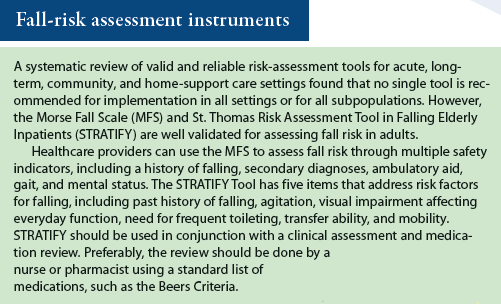Excitement About Dementia Fall Risk
Table of ContentsSome Known Questions About Dementia Fall Risk.9 Simple Techniques For Dementia Fall RiskDementia Fall Risk Things To Know Before You BuyHow Dementia Fall Risk can Save You Time, Stress, and Money.
A loss risk assessment checks to see exactly how most likely it is that you will certainly drop. It is mostly done for older adults. The evaluation generally includes: This consists of a collection of questions regarding your total health and wellness and if you have actually had previous falls or troubles with balance, standing, and/or walking. These devices examine your strength, balance, and gait (the way you stroll).STEADI consists of screening, examining, and treatment. Interventions are recommendations that may reduce your danger of falling. STEADI consists of three actions: you for your threat of dropping for your risk aspects that can be enhanced to try to protect against falls (as an example, balance issues, damaged vision) to reduce your threat of dropping by making use of effective strategies (as an example, providing education and learning and resources), you may be asked numerous questions including: Have you dropped in the past year? Do you feel unsteady when standing or strolling? Are you bothered with dropping?, your copyright will check your stamina, balance, and stride, utilizing the following loss analysis tools: This test checks your gait.
If it takes you 12 seconds or even more, it may suggest you are at higher risk for an autumn. This examination checks stamina and equilibrium.
Move one foot midway forward, so the instep is touching the large toe of your various other foot. Relocate one foot fully in front of the various other, so the toes are touching the heel of your other foot.
The Definitive Guide to Dementia Fall Risk
Many falls occur as a result of multiple adding factors; for that reason, handling the risk of falling begins with identifying the factors that add to fall threat - Dementia Fall Risk. Several of one of the most pertinent threat variables consist of: Background of previous fallsChronic medical conditionsAcute illnessImpaired gait and balance, lower extremity weaknessCognitive impairmentChanges in visionCertain risky drugs and polypharmacyEnvironmental elements can likewise enhance the threat for drops, consisting of: Insufficient lightingUneven or damaged flooringWet or slippery floorsMissing or harmed handrails and order barsDamaged or improperly fitted tools, such as beds, wheelchairs, or walkersImproper use assistive devicesInadequate guidance of individuals residing in the NF, including those that display aggressive behaviorsA effective autumn risk monitoring program needs a comprehensive scientific evaluation, with input from all members of the interdisciplinary group
-copy-5.jpg)
The treatment strategy must also consist of interventions that are system-based, such as those that advertise a secure atmosphere (ideal illumination, handrails, grab bars, and so on). The effectiveness of the interventions should be assessed regularly, and the treatment plan revised as needed to show adjustments in the loss threat evaluation. Executing a loss threat monitoring system making use of evidence-based ideal practice can minimize the occurrence of drops in the NF, while restricting the possibility for fall-related injuries.
What Does Dementia Fall Risk Mean?
The AGS/BGS guideline advises evaluating all grownups aged 65 years and older for fall threat annually. This testing contains asking people whether they have actually fallen 2 or more times in the past year or sought medical interest for a loss, or, if they have not dropped, whether they really feel unsteady when strolling.
People who have dropped once without injury needs to have their balance and stride assessed; those with gait or balance irregularities need to get extra assessment. A history of 1 fall without injury and without gait or equilibrium problems does not necessitate more analysis past ongoing annual loss risk testing. Dementia Fall Risk. A loss danger evaluation is required visit this website as component of the Welcome to Medicare examination

Dementia Fall Risk Fundamentals Explained
Documenting a drops history is one of the high quality signs for autumn avoidance and administration. Psychoactive medicines in specific are independent predictors of drops.
Postural hypotension can usually be eased by minimizing the dosage of blood pressurelowering drugs and/or stopping medicines that have orthostatic hypotension as an adverse effects. Use above-the-knee support tube and copulating the head of the bed boosted might additionally decrease postural reductions in high blood pressure. The suggested elements of a fall-focused physical exam are shown in Box 1.

A TUG time above or equivalent to 12 seconds suggests high autumn threat. The 30-Second Chair Stand test assesses reduced extremity stamina and balance. Being unable to stand from a chair of knee elevation without making use of one's arms suggests boosted autumn threat. The 4-Stage Equilibrium test examines static balance by having the client stand in 4 settings, each progressively much more difficult.